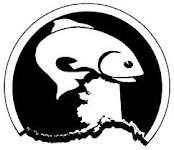Pollock Fleet Pressed to Cut Salmon Bycatch

Friday, April 10 2015
This week, the North Pacific Fishery Management Council has been looking at ways to cut back on the number of salmon that get scooped up by commercial trawl boats in the Bering Sea.
The goal is to send more chums and Chinook back to subsistence users around the state. But as KUCB’s Lauren Rosenthal reports, getting there won’t be easy.
It hardly needed to be said that Chinook salmon have fallen on hard times. State biologist Katie Howard still pointed it out in a presentation to the North Pacific council.
"These recent declines in run abundance for Chinook salmon [are] really a statewide phenomenon," Howard said. "It has been very notable in Western Alaska stocks."
That’s led to commercial closures and subsistence restrictions around the region. At the same time, studies have shown that Western Alaska salmon make up about about half of the Chinook that are accidentally caught during the pollock fishery.
Researchers have spent the past few days trying to explain how the NPFMC could change that.
One option is to make the pollock fleet do more of their fishing in the early part of the year — before salmon move in to the Bering Sea. New penalties are on the table for boats with poor track records.
Alan Haynie is with the Alaska Fisheries Science Center.
"There’s a speed limit," Haynie says. "And if you go over the speed limit, there’s something that you’re going to pay."
Most vessels already work together to avoid salmon. Signing up for penalties and voluntary closures is part of the reason why the pollock fleet has avoided heavier restrictions on bycatch until now.
There’s no limit on the number of chum they can take in a single year. And they usually don’t come close to their hard cap for Chinook of 60,000 fish.
Subsistence fishermen have argued that cap isn’t tough enough. And the North Pacific Council agreed to consider dropping it by 60 percent in years when there aren’t enough salmon passing through the Unalakleet, Kuskokwim and Upper Yukon rivers.
It’s the most restrictive plan on the table this week. And when the council’s advisory board got to weigh in, it didn’t get their support. They’re recommending new incentives to avoid both chum and Chinook.
That might lower bycatch rates, but it’s not clear how many of those salmon would make it back to Western Alaska rivers. And researcher Alan Haynie says it’s also tough to gauge the economic outcomes.
"One thing that’s really become clear in terms of assessing the impacts on the fleet is that the impacts aren’t just a little more fuel," Haynie says. "They’re big changes in product value. When people move off of fish that are the optimal size and move somewhere else, there’s a real loss in that sense."
Haynie says it won’t be possible to account for those losses before the North Pacific council takes a final vote this weekend.
When they do, they’ll be down one member. NOAA's Office of General Counsel has ordered Simon Kinneen to recuse himself.
Kinneen is a vice president for the Norton Sound Economic Development Corporation, or NSEDC. They’re a community development quota group for Nome and surrounding villages — with their own piece of pollock quota and ownership shares in other seafood businesses.
"If a council member has financial interests that exceed 10 percent of the harvests or processing, that is a threshold that has been exceeded and a recusal determination follows," says NOAA attorney Lauren Smoker.
Kinneen tried to appeal the ruling. It went through another review, but NOAA's standing by its decision.



